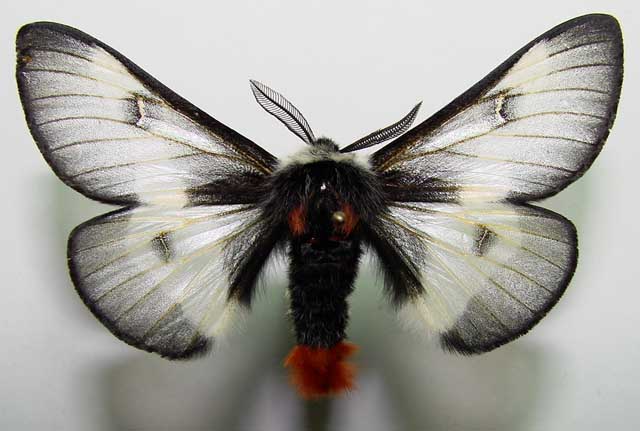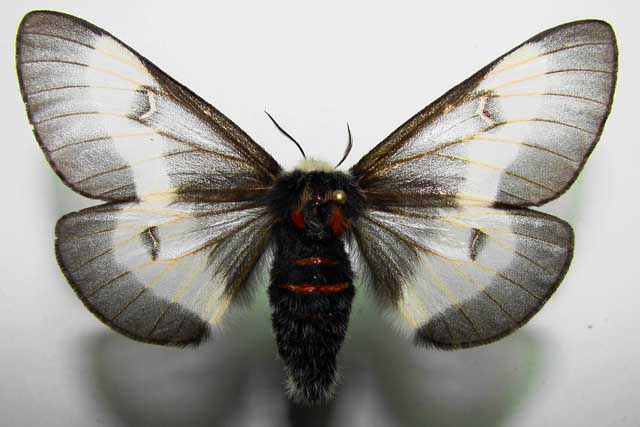Hemileuca maia
Hemileuca maia ??

Hemileuca maia ??, male from coastal south Texas,
courtesy/copyright
Charles Bordelon and Ed Knudson.

Hemileuca maia ??, female, from coastal south Texas,
courtesy/copyright
Charles Bordelon and Ed Knudson.
Charles Bordelon writes, "Here's something interesting... These are
H. maia from coastal south TX. This is the "POC Segregate"
that was first discovered about 4 years ago in Port O'Connor, Calhoun
Co., TX. These were first called "peigleri," but some of us don't
think so. Peigleri is well-distanced and separated from this coastal
bug, which can be seen flying out over the Gulf. There is a small
Live Oak that grows along a stretch of Calhoun Co., that grows in
dense thickets. These trees don't grow much over 15', though some of
the oldest may reach 20 or 25'. It has been reared, and I imagine
this will be published sometime. It is believed to be part of the
"Great Lakes Complex," rather than peigleri, and is probably a new
ssp. I've seen these north of there in Victoria, Jackson and
Wharton Co.'s on the wing, and they look darker. I got to wondering
if there weren't more isolated colonies further up the coast in Live
Oak barrier forest, so hoped to find a "missing link" connecting
these to nominate maia. A day after these were collected, my wife
took a female in Beaumont, Jefferson County. It appears to be that
missing link... The specimen is in the freezer over there, and I
haven't had a chance to go and get it yet. To the north of
Jefferson Co., there are sightings of maia in Hardin and Tyler Co.'s
which are likely nominate maia. North of there, they definitely
are.
"I asked Vernon Brou if he knew of any coastal populations west of
New Orleans. Of course, nominate maia is there, and on over to
Florida, and northward. So far, none are know from coastal
"Acadiana," but it is very difficult to traverse, unless you have an
airboat. It may be possible to find them in Cameron Parish, but
that's a bad time of year to try and get away. So the saga
continues; and once I have the Beaumont specimen mounted, I'll send
you a pic. Anyway, attached are the "POC's", both collected in
Port O'Connor, on 8 Dec, 2007. male: 59mm, female: 70mm. Let me
know what you think, or if you have heard about these."
We have much yet to learn and understand. These may
just be a variant of H. maia where the variant characters
are the dominant ones due to geographic isolation, perhaps due
to flooding. Perhaps even the local host plant is influencing
the appearance of these moths. It would be great if a couple
of specimens could be sent to Rodolphe Rougerie for DNA barcode
analysis.
On the other hand, they could be an entirely new species, and it
would be interesting to discover why they have such a limited range."
Bill Oehlke
Use your browser "back" button to return to previous page.

